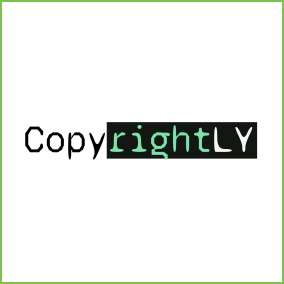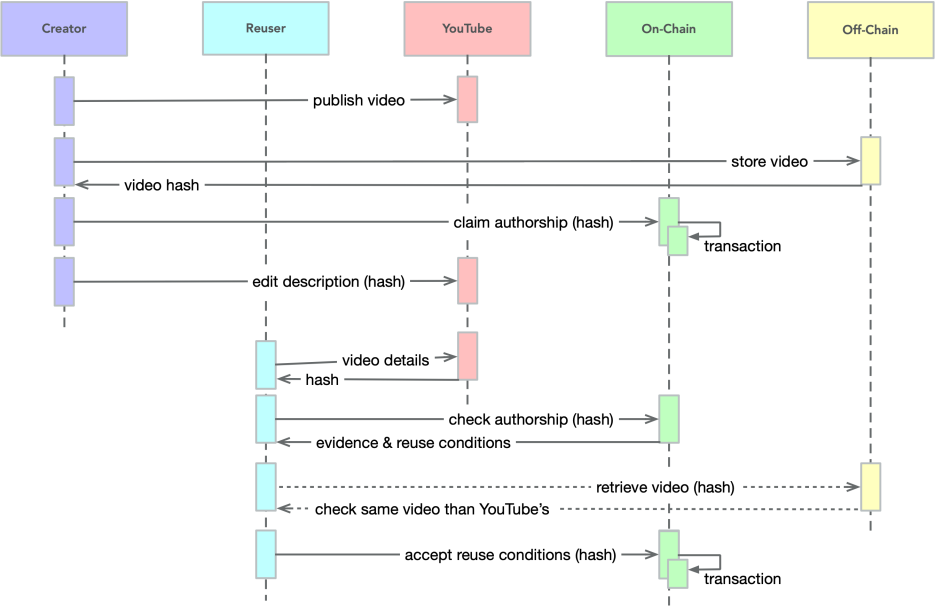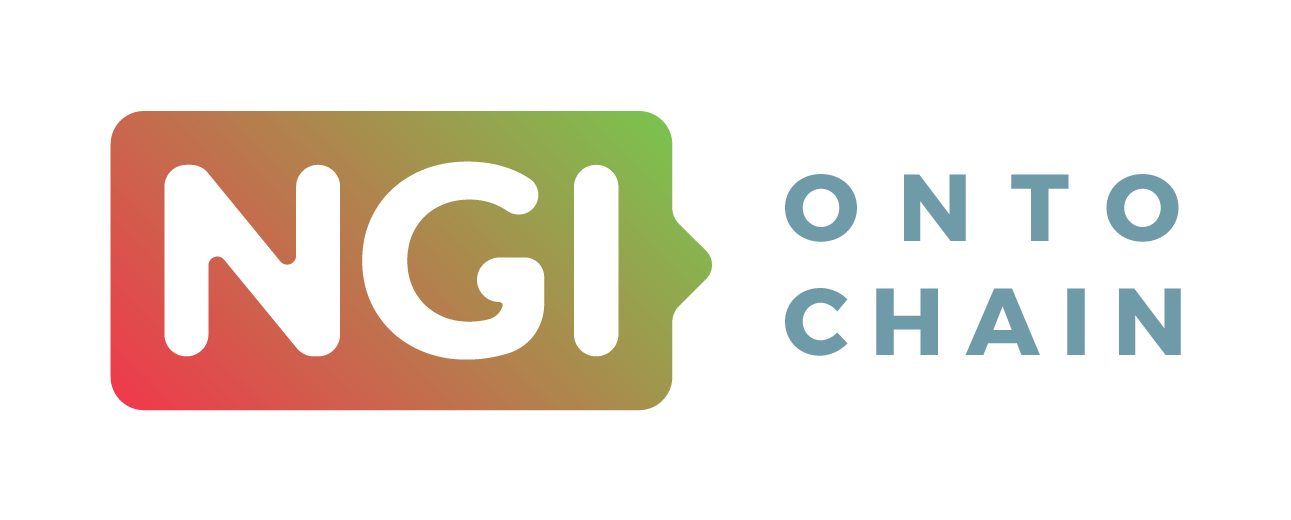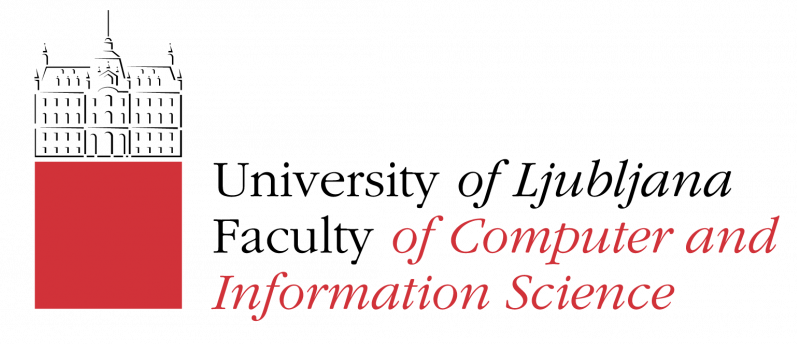
ABOUT THE PROJECT
Rhizomik CopyrightLY: Decentralised Copyright Management for Social Media
CopyrightLY is a decentralised application that leverages blockchain and semantic web technologies to facilitate copyright management of social media. It is integrated into existing social media platforms and allows content creators to explore ways to exploit their media beyond those made possible by those platforms. It also provides potential reusers ways of checking authorship of the content they are willing to reuse and the conditions under which it is available.
To do so, content on social media platforms is linked by creators to on-chain authorship claims tied to their identities. Additional evidence can be provided combining off-chain data and on-chain transactions to sustain those claims. Thus, they can be used in case of a copyright complaint, even as evidence in court. This approach also discourages false claims, which cannot be retracted once on-chain.
Authorship claims are accompanied by default reuse conditions modelled using semantic technologies and based on a copyright ontology. They provide the necessary and unambiguous building blocks that also make the terms machine-actionable. Reusers can negotiate these terms and, after acceptance, on-chain transactions are generated to keep track of the agreed terms.
https://copyrightly.rhizomik.net

Motivation for the project:
The features provided by CopyrightLY can be applied to other use cases beyond copyright management, like facilitating the fight against fake content or creating social media decentralized markets. Moreover, they can constitute fundamental building blocks of the ONTOCHAIN ecosystem bridging blockchain and Web 2.0 systems using semantic interoperability mechanisms.
Generic use case description:
YouTube video creators can store their content off-chain, generating a hash specific for the content. Through an on-chain transaction, an authorship claim of that hash is stored. The hash is also added to the YouTube video description. Potential reusers can follow the hash from the description to recover the authorship claim and the reuse conditions.
Essential functionalities:
To link social media content to on-chain authorship claims, in turn tied to creators identities and content hashes. To state reuse conditions, allowing their negotiation and registering reuse agreements on-chain.
How these functionalities can be integrated within the software ecosystem:
Authorship claims are integrated with social media platforms through content hashes that creators add to media description. They are verified on-chain using oracles, which can also associate social media user profiles with on-chain identities.
Gap being addressed:
Nowadays, a lot of content is published through social media platforms, which restrict how content owners can monetize their creations. Creators are constrained to monetizing their work in the corresponding platform or manually negotiating reuse, for instance through emails, which lack any kind of automation or trust mechanism.
Expected benefits achieved with the novel technology building blocks:
To bootstrap a mechanism to associate authorship claims to social media creations, providing new ways for creators to monetize their content (from on-chain reuse agreements to NFTs) while potential reusers get access to more reliable content.
Potential demonstration scenario:
Though any media platform or content type might benefit, the initial idea is to create a proof of concept addressing YouTube content. Video creators will be able to associate their video to on-chain authorship claims and reuse conditions. Reusers will be able to check claims and conditions, negotiate them and register agreements on-chain.
PROJECT OUTCOMES
Blockchain and semantic technologies for decentralised copyright management of social media.
Demo:
Repositories:
https://github.com/rhizomik/copyrightly
Documentation:
https://github.com/rhizomik/copyrightly/wiki
More details:
Customer engagement
The DApp is available online and is free to use by any creator. They can use the DApp to register content authorship, provide evidence supporting authorship and mint NFT for content licensing. In addition to use the DApp, users can benefit from the ecosystem through their stake on the CLY token. The stake can be on their authorship claims but also one other’s claims they help curate.
Monetization
There are no specific fees to use the DApp. However, there is a potential revenue stream linked to the CLY token. Its price is tied to a bonding curve that will increase the token value based as long as it is minted.
Scenario
YouTube video creators can store their content off-chain, generating a hash specific for the content. Through an on-chain transaction, an authorship claim of that hash is stored. The hash is also added to the YouTube video description. Potential reusers can follow the hash from the description to recover the authorship claim and the reuse conditions.
Semantic content and content transfer
Authorship claims are integrated with social media platforms through content hashes that creators add to media description. They are verified on-chain using oracles, which can also associate social media user profiles with on-chain identities.
Licensing terms of registered media are represented using semantic metadata and the copyright ontology. Semantic NFTs are used to license content.
Ownership
DApp ownership is represented through the CLY token. Governance can be added using a DAO with voting rights based on the CLY staked hold by participants.
Existing similar solutions/services
There are many copyright registration services based on blockchain technologies. However, none integrates evidence collection, authorship claim curation and licensing through NFTs. Additionally, CopyrightLY addresses the problem regarding NFTs copyright. CopyrightLY NFTs are backed by on chain authorship claims and supporting evidence, which have been collectively curated.
TESTIMONIAL
NGI ONTOCHAIN provided a motivating and challenging framework, with great support from our coaches, where we were able to turn our ideas about using blockchain and semantic technologies for copyright management into something real. The ecosystem built by the participants provides a lot of promising building blocks to build the blockchain-based knowledge management solutions of the future.
- Roberto García
TEAM
Roberto García research focuses on semantic technologies and blockchain for decentralised copyright management.

Ana Cediel
Ana Cediel is a legal expert in blockchain and the digital economy.
Rosa Gil research focuses on cryptoart, semantic technologies and Human-Computer Interaction.
Mercè Teixidó focuses on research in Human-Computer Interaction and Digital and Semantic Technologies.
ENTITIES
A public university combining a long and fruitful tradition (established in 1300) with a young and dynamic structure (refounded in 1991).





 This project has received funding from the European Union’s Horizon 2020 research and innovation programme under grant agreement No 957338
This project has received funding from the European Union’s Horizon 2020 research and innovation programme under grant agreement No 957338




